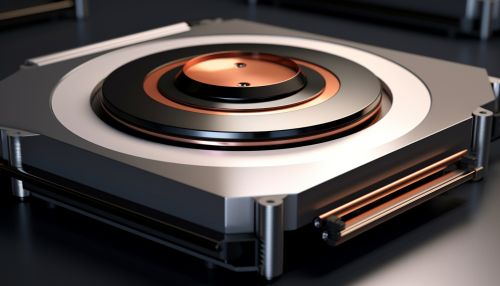Data storage device
Overview
A data storage device is a piece of equipment used to store digital data. It is a core function and fundamental component of computers, which are used to store, process, and disseminate information. The data storage device is the mechanism that records, preserves, retrieves, and erases data from the storage medium. The data storage devices can be divided into two main categories: primary storage devices, also known as main storage or memory, and secondary storage devices, often referred to as external or auxiliary storage.
Primary Storage Devices
Primary storage devices, also known as main storage or memory, are the devices that store data that is actively being used or processed by the computer. These devices are directly accessible by the computer's CPU, and they store data temporarily, meaning that the data is lost when the computer is powered off. Primary storage devices include RAM, ROM, and cache memory.
Random Access Memory
Random Access Memory (RAM) is a type of volatile memory that stores information that is being actively used. RAM is directly accessible by the CPU, which allows for fast data retrieval. However, the data stored in RAM is lost when the computer is powered off or restarted.
Read-Only Memory
Read-Only Memory (ROM) is a type of non-volatile memory that stores the firmware or software that boots up the computer and initializes the hardware. Unlike RAM, the data stored in ROM is not lost when the computer is powered off.
Cache Memory
Cache memory is a type of volatile memory that stores frequently used data to speed up data retrieval. It is smaller and faster than RAM, and it is located closer to the CPU.
Secondary Storage Devices
Secondary storage devices, often referred to as external or auxiliary storage, are the devices that store data that is not actively being used or processed by the computer. These devices are not directly accessible by the CPU, and they store data permanently, meaning that the data is not lost when the computer is powered off. Secondary storage devices include hard disk drives, solid state drives, and optical discs.
Hard Disk Drive
A hard disk drive (HDD) is a type of non-volatile storage that stores data on a rotating platter with a moving magnetic head. HDDs are known for their large storage capacity and lower cost per gigabyte compared to other types of storage.
Solid State Drive
A solid state drive (SSD) is a type of non-volatile storage that stores data on flash memory chips. SSDs are known for their high speed and reliability, but they are more expensive per gigabyte compared to HDDs.
Optical Disc
Optical discs, such as CDs, DVDs, and Blu-ray discs, are a type of optical storage that stores data on a disc that is read by a laser. Optical discs are known for their durability and long lifespan, but they have a lower storage capacity compared to HDDs and SSDs.


